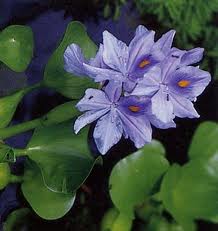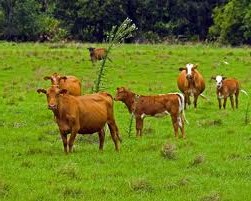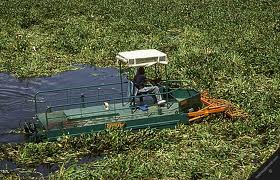Facts don’t disappear in life, but in the end attitude is their equal. Water hyacinths can demonstrate that.
 If you know much about the state of Florida it was over run not long ago by water hyacinths. The state botanists still call it the worse weed on earth. They say this for two reasons: It impacts tourism and also the water ecology of the state. It’s a billion-dollar boondoggle. But then there is attitude and perception. While flustered Florida sputtered away calling it a weed Florida ignored the fact that in other parts of the world the water hyacinths is used for cattle fodder (a point you would think would not have been missed by the nation’s third largest producer of cattle.)
If you know much about the state of Florida it was over run not long ago by water hyacinths. The state botanists still call it the worse weed on earth. They say this for two reasons: It impacts tourism and also the water ecology of the state. It’s a billion-dollar boondoggle. But then there is attitude and perception. While flustered Florida sputtered away calling it a weed Florida ignored the fact that in other parts of the world the water hyacinths is used for cattle fodder (a point you would think would not have been missed by the nation’s third largest producer of cattle.)
 With preparation people can eat water hyacinth, it makes a good fertilizer, has very useable fiber, can be used to make bio-fuel, and importantly it has the ability in water or on land to absorb pollutants. It’s a sponge that loves to grow and can double its population in just two weeks. Do you have a “love canal” that needs cleaning up, or is the price of gasoline getting too high? To the point: Is water hyacinth a weed or a bio-tool that can be used? Florida had to address the threat it posed. Protecting an economy is important because that in turn protects people. But maybe it is time for some attitude adjustment.
With preparation people can eat water hyacinth, it makes a good fertilizer, has very useable fiber, can be used to make bio-fuel, and importantly it has the ability in water or on land to absorb pollutants. It’s a sponge that loves to grow and can double its population in just two weeks. Do you have a “love canal” that needs cleaning up, or is the price of gasoline getting too high? To the point: Is water hyacinth a weed or a bio-tool that can be used? Florida had to address the threat it posed. Protecting an economy is important because that in turn protects people. But maybe it is time for some attitude adjustment.
 Water hyacinth can be a “weed” with all the negative connotations that engenders or a valuable plant. The view determines ideas and how tax dollars are spent. Now billions are spent to either spray the plant with favored pollutants (called herbicides) or mechanically crush the plant and let it rot. Why not utilize the plant and
Water hyacinth can be a “weed” with all the negative connotations that engenders or a valuable plant. The view determines ideas and how tax dollars are spent. Now billions are spent to either spray the plant with favored pollutants (called herbicides) or mechanically crush the plant and let it rot. Why not utilize the plant and  at the same time reduce its population? The newsman Harry Reasoner once said he hated labels because once you labeled someone or something you stopped thinking about it. Calling a plant a weed does exactly that. You can spend billions killing something and throwing it away, or harvesting something that can help people and show a return. It’s a matter of attitude.
at the same time reduce its population? The newsman Harry Reasoner once said he hated labels because once you labeled someone or something you stopped thinking about it. Calling a plant a weed does exactly that. You can spend billions killing something and throwing it away, or harvesting something that can help people and show a return. It’s a matter of attitude.


Same thing happened with kudzu in Mississippi. The state spends money spraying kudzu vines with tons of pesticides, yet if you want kudzu root flour, you have to shell out $10-20 for a small jar of it imported from Japan, even though it grows for free everywhere!
An excellent point, Joyce! I did not even know that kudzu root flour was available at all.
In addition to the edible portions (for humans), it is also a great fodder for livestock, apparantly equalling or exceeding alfalfa, but without having to fertilize or add tons of lime per acre per year.
Such a waste to apply poinsonous herbicides to any plant, (or pesticides in an attempt to kill ‘bugs’) but especially one that is so useful IF people would just take a ‘big picture’ view. And maybe add a dollop of that famous ‘American ingenuity’!
Goats easily control kudzu, but cattle, sheep, and other animals can also learn to eat it, and do well on this nutritious ‘weed’!
Best regards-
FYI – Having cattle eat plants other than grasses is a mistake, their delicate systems have a hard enough time digesting the current additives we give them, feeding them more of the same is not a good idea. Now, feeding these plants to pigs and goats is another story.